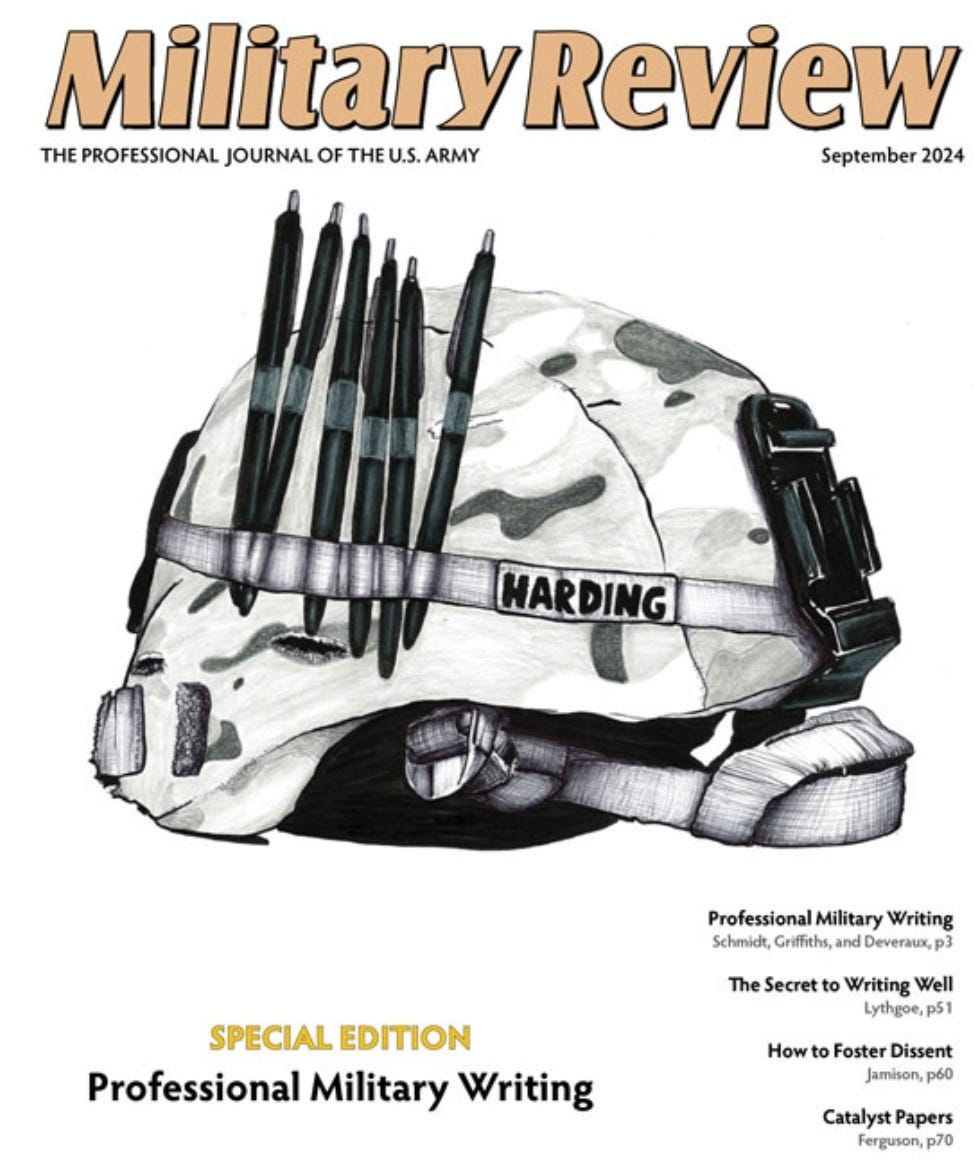How to Write an Article
A Special “How-To” Edition of Military Review
This morning while waiting for a clerk, a sergeant will have an idea about how the Army could be better. A lieutenant will share an idea of the same sort with her buddy while picking up coffee after PT. The sergeant might mull his idea until other pressing matters pull his attention away this afternoon. The lieutenant’s might gain traction in conversation, only to lose it when her phone rings with the workday’s first problem
One way to rescue soldiers’ good ideas from oblivion is for soldiers to write them down. But how? “How to Write An Article” in the Harding Project’s special edition of Military Review offers an answer to this question. One can read the full article here. For those with little time, like our sergeant and lieutenant, and many of our readers, the article’s abridged seven step guide is below.
Figure 1 Appendix. How to Write an Article: An Abridged Seven-Step Guide
The article offers other bits of advice to prospective writers, too. Because the subscribers of this newsletter include many current and future leaders, it is worth highlighting the below bit:
Seek feedback on your draft from your leadership as well. Leaders may have much to offer your piece, as they have usually been around longer than you and know a thing or two about the context in which your problem developed.
Showing your work to your leaders serves other purposes, too. Your article may alert them to an overlooked problem in their formation. Sharing your draft with your leaders will also spare them a surprise if it is published. This is particularly important if you are presenting controversial recommendations or challenging policies that directly impact your organization.
It takes courage on the writer’s part for the writer to approach a leader with a draft. Consider making it easier for the writer to heed such advice by soliciting ideas, even if they dissent from status quo policy. Better yet, if soldiers in your formation have ideas but struggle to write them down, share “How to Write An Article” and the other how-to guides in Military Review’s special edition. Doing so will send a powerful signal, and hopefully spare a good idea a premature death.





And don’t be distressed if after you get some distance into your draft you decide it isn’t working out. I’ve done this on several occasions but also found that the exercise leads to something else useful later.
Great article - I shared with some joint colleagues who were struggling with writing. Thank you for this!